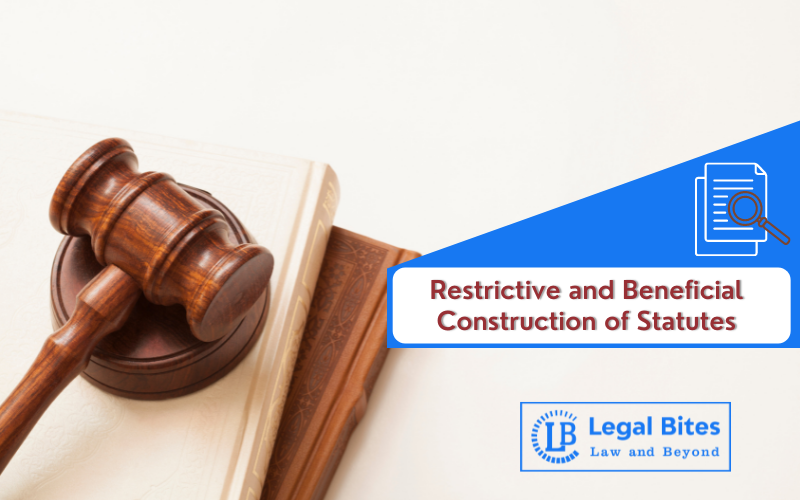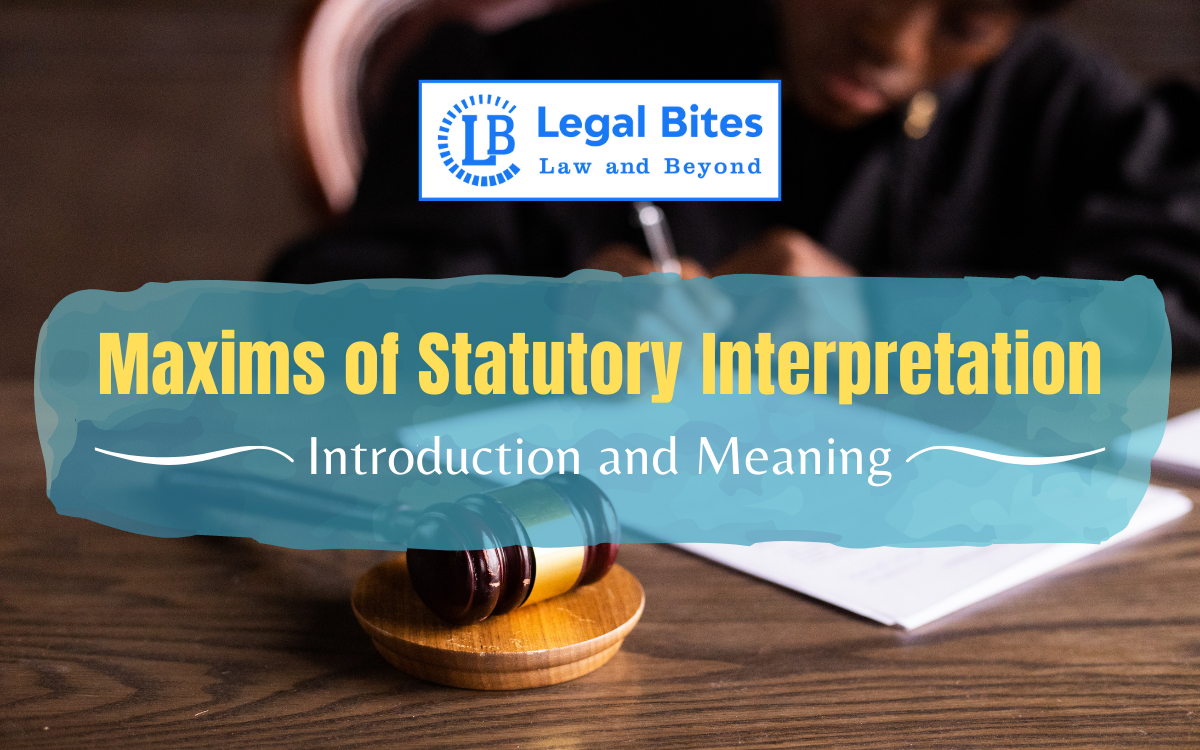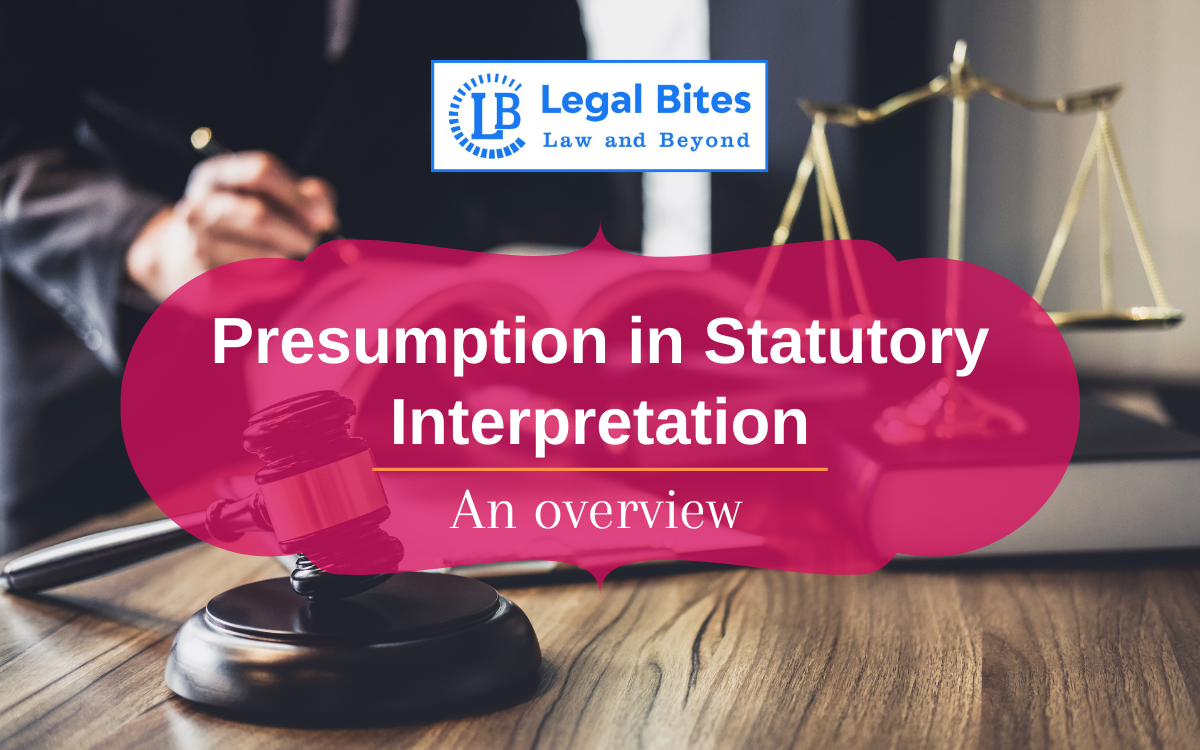Restrictive and Beneficial Construction of Penal Statutes
Explore restrictive and beneficial construction of penal statutes with key cases and interpretation principles under Indian law. Scroll to read more!;

The interpretation of penal statutes is a critical area in statutory construction, primarily because these laws impose sanctions and punishments. The two principal approaches—restrictive (strict) construction and beneficial (liberal) construction—guide courts in interpreting penal provisions. The former favours the accused, while the latter leans towards victims and public welfare. This article explores both approaches with reference to Indian and comparative jurisprudence.I. Penal...
The interpretation of penal statutes is a critical area in statutory construction, primarily because these laws impose sanctions and punishments. The two principal approaches—restrictive (strict) construction and beneficial (liberal) construction—guide courts in interpreting penal provisions. The former favours the accused, while the latter leans towards victims and public welfare. This article explores both approaches with reference to Indian and comparative jurisprudence.
I. Penal Statutes and the Need for Interpretation
Penal statutes are laws that prescribe punishment for crimes and offences. Their interpretation becomes necessary due to:
- Ambiguities in language
- Unforeseen circumstances
- Need to balance individual rights and public interest
Purpose of Penal Law
- To deter and punish criminal behaviour
- To uphold rule of law and justice
- To ensure fair trial and prevent miscarriage of justice
II. Restrictive (Strict) Construction of Penal Statutes
Definition and Principle
The rule of strict construction requires that penal statutes must be interpreted narrowly. If a provision is ambiguous, the benefit must go to the accused.
Legal Maxim:
“In dubio pro reo” – When in doubt, favour the accused.
Key Features
- No punishment without clear legislative mandate
- No interpretation by analogy
- Burden on the prosecution
Important Case Laws
Tuck v. Priester (1887) – A penal statute must be construed strictly.
State of Maharashtra v. Salman Salim Khan, (2004) – Held that penal statutes should be interpreted in favour of the accused if there is any ambiguity.
R.S. Nayak v. A.R. Antulay, (1984) 2 SCC 183 – Emphasised caution in interpreting penal provisions.
III. Beneficial (Liberal) Construction of Penal Statutes
Definition and Principle
This approach allows the court to adopt a wider interpretation if it helps to fulfil the object of the statute, especially in cases involving:
Welfare statutes
- Victim-centric laws
- Environmental or social protection
Applicability
- Laws protecting women (e.g., Domestic Violence Act)
- Laws dealing with child protection (e.g., POCSO)
- Laws against corruption and public wrongs
Important Case Laws
Workmen v. American Express International Banking Corp., (1985) 4 SCC 71 – Beneficial statutes should be interpreted in a manner that advances the object.
M.C. Mehta v. Union of India, AIR 1987 SC 1086 – Beneficial construction adopted in favour of environmental protection.
State of Karnataka v. Appa Balu Ingale, AIR 1993 SC 1126 – Liberally interpreted anti-untouchability laws to give them full effect.
IV. Reconciling the Two Approaches
While traditionally penal statutes were interpreted strictly, modern jurisprudence increasingly favours a purposive or contextual interpretation, especially where the penal law aims to protect public interest or vulnerable sections.
Balanced Approach
- Strict construction for punitive provisions
- Beneficial construction for procedural or victim-centric provisions
Judicial Trend
Courts often apply a context-sensitive interpretation rather than strictly classifying laws as penal or beneficial.
Indian Jurisprudence and Legislative Trends
Recent legislative trends show an increased reliance on purposive interpretation even in penal statutes:
- POCSO Act
- Environmental statutes with penal sanctions
- Corporate and financial fraud laws
The judiciary recognises that a mechanical application of the strict rule may defeat the statute's objective.
Conclusion
The interpretation of penal statutes is not merely a technical exercise—it is a balancing act between safeguarding individual liberty and protecting societal interests. While restrictive construction protects the accused from arbitrary prosecution, beneficial construction ensures justice to victims and reinforces the law's deterrent effect. Courts in India now follow a middle path, applying strict construction when liberty is at stake and beneficial construction when the statute aims to uphold social justice.
References
- G.P. Singh, Principles of Statutory Interpretation
- Tuck v. Priester, (1887) 19 QBD 629
- R.S. Nayak v. A.R. Antulay, (1984) 2 SCC 183
- M.C. Mehta v. Union of India, AIR 1987 SC 1086
- State of Maharashtra v. Salman Salim Khan, (2004) 1 SCC 525





